
Having followed the debate about English vs. metric measurements, I would like to add the following remarks. My partners and I do cabinets and interior trim work, and we measure everything to the 1/64 in. We not only measure quickly, but we also yell these measurements to a cut man who in turn can quickly mark and cut the stock (he uses a sharp 5h pencil). Our system is so ridiculously simple that I’m surprised it took so long for the necessary language to evolve. We’ve finally solved the problem of the varying hair thickness. Here’s how it works.
In our language 36-3/4 in. is 36-twelve (our code for 12/16, or 3/4 ). In our language 36-25/32 in. is 36-twelve and a half. Halfway between 36-twelve and 36-twelve and a half is 36-twelve strong (36-49/64 in.). To us, 36-51/64 in. is 36-thirteen shy.
If someone were to hand me a tape with marks every 64th of an inch, I would be lost. But I have no problem splitting a 16th in half and then splitting that half in half. If I have to add a column of numbers using this method, I signify the strongs with a plus sign, and the shys with a minus sign. Then before I add up the numbers, I cancel out as many of the shys and strongs as possible and adjust the total up or down according to how many shys or strongs are left over. To reduce my column of 16ths to whole numbers, I invoke the framers litany—16, 32, 48, 64, 80, 96—while extending one finger for each chant. For example, let’s say I’ve got 87-and-a-half 16ths in my fraction column. I extend a finger for each 16. When I get to 80, I’ve got five fingers extended. So my answer is 5-seven and a half.
At this point I probably sound like J. R. Tolkien selling used cars. But give this system a chance, and you’ll discover its benefits. Just take a small tape and try finding 23-43/64 in. Then take a 25 footer and find 23-eleven shy. Which is easier?
Jim Chestnut, Fairfield, CT
Edited and Illustrated by Charles Miller
From Fine Homebuilding #78
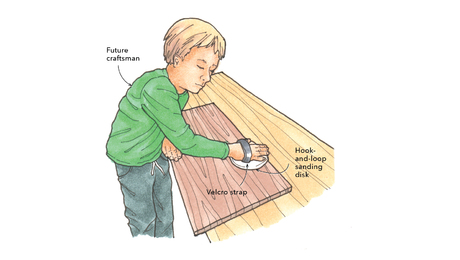
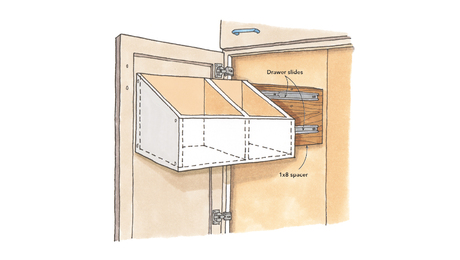

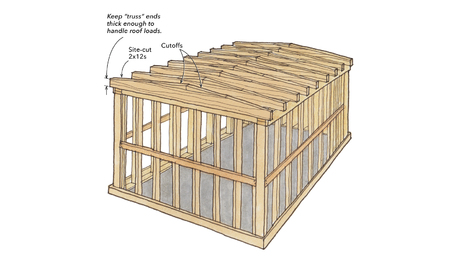



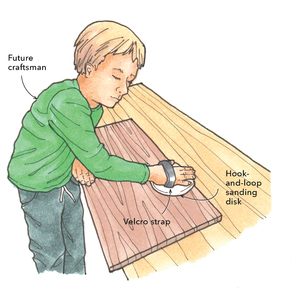
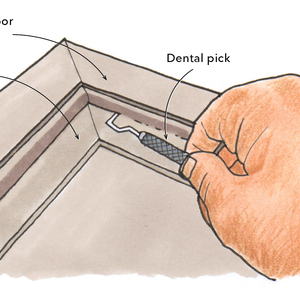
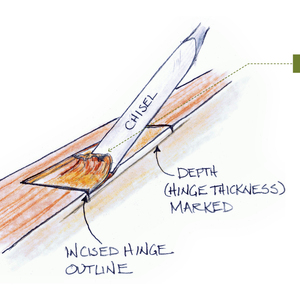





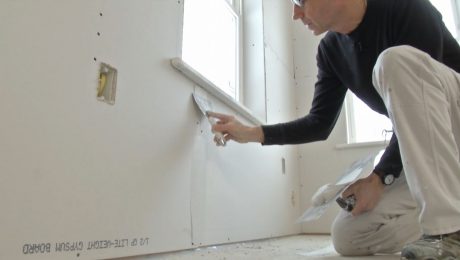
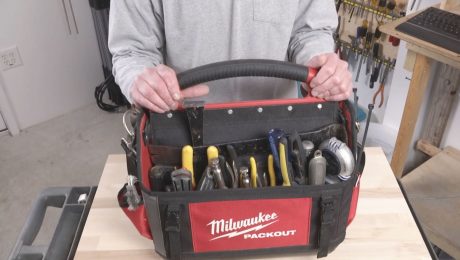

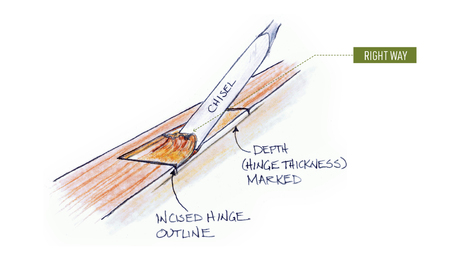










View Comments
I'm not a professional. But I've done some cabinet making. In our new house, I built kitchen cabinets and assorted built-in cabinets. I use Blum slides, which come with directions in metric. I broke down and bought a metric tape measure. It made life so much easier. One millimeter is a pretty good size for tolerances, about midway between a sixteenth and a thirtysecond.
I'll never go back to inches for cabinets or furniture.
We do pretty much the same thing- except we call the fraction as it is then add the half, plus, or minus. I remember a PM thinking we were lazy and calling 3/4+ because we didn't know 13/16, I quickly chimed in with "13/16 is too big and 49/64" doesn't translate as well"...he never said another word. Thanks for sharing your method.
That method is just absurd ! As the commentator above says, do it in metric like the rest of the world, and it is a million times easier. Nothing to diddle around with in code, just read it off the tape. Half or even a quarter of a millimetre is easy to judge by eye.
Incidentally, it is not called 'English' measurement; it is is 'Imperial' measurement, as are your pints, miles, pounds etc.
There is an old saying Keep it simple stupid (KISS) and i have never heard anything so complicated. In Australia and New Zealand we converted to metric measurements in the 1970's and as a young apprentice carpenter needed to learn it. Now it is so simple. Forget the 1/64 business - in all the years of framing and finish carpentry never do we need less than 1mm (full or bare; slightly larger or smaller). KISS mate.
I developed this exact method twenty odd years ago and I concur with the author. It is also easier when writing down measurements. The notation I use is: 3/4 = 12, 13/16 = 12> or 12 1/2, 25/64 is 12+, 27/64 is 14-. One you are used to it, it is very simple and intuitive. It is very difficult to discern tape measure marks smaller than 1/16, but the eye can break that into 4.
Seriously guys try using metric for a week doing finish carpentry or any other work, its so much easier . Counting in Base 10 is taught in school when you are five because its easier than adding fractions.
Basically what Jim Chestnut is using is a system of fractional measurements. Theoretically it would be possible to do that in the metric system too. How about ½ cm, ¼ cm, 1/8 cm, etc.? I’ve had machinists tell me that there are basic advantages to using fractions instead of decimals – it’s quite easy to eyeball half of a measure.
Actually it’s possible to have decimals of a foot or an inch. We used to do our structural calculations in inches and decimals thereof. Then we dimensioned the plans in feet and inches and fractions thereof. The field engineers laid out the jobs in feet and decimals thereof and finally the construction crew built the thing in feet and inches and fractions thereof. Whew!
To me the biggest aggravation with the Imperial system has to do with calculations. Say you want to calculate area or volume or weight. Or adding up a chain of dimensions.
Then there are some problems caused by illogical and arbitrary selection of units. Why is the flow rate in a pipe given in gallons per minute, but as soon as the same water enters a river, it flows in cubic feet per second? I asked questions like this 5 decades ago when I studied civil engineering and I’m still asking the same questions today.
When I got my engineering degree half a lifetime ago, I loved doing engineering problems in metric and really dreaded using the customary American units (slug-ft/sec/sec???). Metric really is easier in that regard. But now as a cabinet guy, I use standard fractions and cut to 1/32nd of an inch accuracy. 15/32" would be 7/16 +. 13/32" would be 7/16 -- . I often have to trim off another BCH after trial fitting the crown, which just happens to be the amount that the side of a carbine tooth stands proud of the surface of the blade disc.
I agree with the Kiwis and Aussies on this one, metric is just way more logical, base ten. I imagine the author memorized/learned this system, but it is a problem if you ever have to work with other trades, that don't know your system. I have often wondered how much brain damage ie. wasted time I have spent trying to deal with American numbers over the years. I bought a metric tape and love it.